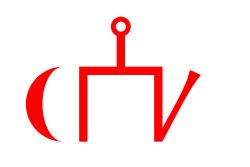Tímúrovská říše
| Írán a Túrán Iran-u-Turan توران (per) ایران و توران (per)
| |||||||||||||||||||||||||||||||||||||||
| Motto راستى رستى (Rāstī rastī) („Ve správnosti spočívá spása.“) | |||||||||||||||||||||||||||||||||||||||
Geografie
| |||||||||||||||||||||||||||||||||||||||
4 400 000 km² (1405) | |||||||||||||||||||||||||||||||||||||||
| Obyvatelstvo | |||||||||||||||||||||||||||||||||||||||
| Státní útvar | |||||||||||||||||||||||||||||||||||||||
tanka (mince) | |||||||||||||||||||||||||||||||||||||||
Vznik | |||||||||||||||||||||||||||||||||||||||
Zánik | |||||||||||||||||||||||||||||||||||||||
| Státní útvary a území | |||||||||||||||||||||||||||||||||||||||
| |||||||||||||||||||||||||||||||||||||||
Tímúrovská nebo Tamerlánova říše, zaznamenána v dobové literatuře jako Írán a Túrán (persky ایران و توران, Iran-u-Turan, توران – nápis Túrán na skále v současném Kazachstánu), byl pozdně středověký turko-mongolský sunnitský kulturně perský stát na pomezí Blízkého východu a Střední Asie, v perštině známé jako Túrán. Byl založen turkickým dobyvatelem Tímúrem Lenkem (Tamerlánem) ve 14. století. Ovládal území dnešního Íránu, Afghánistánu, Kavkazu, Kyrgyzstánu, Tádžikistánu, Turkmenistánu, Uzbekistánu, části Turecka, Iráku, Pákistánu a severní Indie. Centrem říše byl Samarkand. Vládla jí Tamerlánem založená Tímúrovská dynastie jeho potomků. Muslimští ší'itští autoři nazývají dynastii tímúrovců jako Gurkani (persky گورکانیان, Gūrkāniyān), které je odvozeno od slova pro zetě. Tamerlán se jinak také tituloval jako güregen (královský zeť) aby legitimizoval svou vládu spočívající na nástupnictví po Čingischánovi, od něhož však nemohl odvozovat svůj původ. Za tímto účelem se oženil s princeznou Saraj Mulk, která tento původ měla.
Název říše
Ve své době je tímúrovský stát zmiňován (v literatuře) jako Írán a Túrán (Iran-u-Turan), případně Máveránnahr (arabsky ما وراء النهر). Takto vzpomíná na Tamerlána nápis na skále v Kazachstánu a na jeho protivníka chána Tochtamiše, který vládl Zlaté hordě, zde nepřesně uváděněn jako „bulharský chán“:
| „ | ...Sultán Túránu, Tímur bej, vyrazil se třemi sty tisíci vojáky ve jménu islámu proti bulharskému chánovi Tochtamišovi...“ | “ |
Odkazy
Reference
V tomto článku byl použit překlad textu z článku Timurid dynasty na anglické Wikipedii.
Související články
Externí odkazy
 Obrázky, zvuky či videa k tématu Tímúrovská říše na Wikimedia Commons
Obrázky, zvuky či videa k tématu Tímúrovská říše na Wikimedia Commons
Média použitá na této stránce
Autor: Ec.Domnowall, Licence: CC BY-SA 4.0
Flag according to Angelino Dulcert (1339) and Pizzigano's (1367) maps
A Flag that represents the Ilkhanate of the Mongol Empire in the Catalan Atlas, a primary source created in 1375. Actual use of this flag by the Ilkhanate is not confirmed by other sources.
No official flag.
Autor: Samhanin, Licence: CC0
Flag of the Khanate of Khiva, "The museum of Khiva displays (vertically) the flag used by the khanate of Khiva during the civil war (1917-1922). The khanate, which had been annexed by Russia in 1873, proclaimed independence on 13 February 1917. In 1918, the khan was overthrown by a Turkmen chief. Then began a period of anarchy. The protectorate of Khiva was suppressed on 9 April 1919 and Khiva was included in the new Republic of Khorezm, created by the Soviets on 26 April 1920."
Autor: पाटलिपुत्र, Licence: CC BY-SA 4.0
Three annulets symbol of the Timurid Empire
Mameluke Flag over Cairo according to the Catalan Atlas c. 1375 created by James Dahl. The golden banner is supposedly identical to the Ayyubid banner.
Created with Inkscape
A flag that represents the Chagatai Khanate of the Mongol Empire in the Catalan Atlas, a primary source created in 1375. Actual use of this flag by the Chagatai Khanate is not confirmed by other sources.
Autor: Vorziblix, Licence: CC0
The flag of the Golden Horde, as shown in Angelino Dulcert's 1339 map. A similar flag appears in the later Catalan Atlas (1375), providing corroboration.
See also Early Mongol Flags at crwflags.com:
- One of the charges is a crescent and the other looks like a simplified form of the tamga from the flag of Idel Ural. On different copies of the flag, the crescent has different size; it is often smaller than shown here, sometimes even reduced into a simple oblique stroke and conjoined with the other charge into a si[n]gle symmetrical object; the other charge also sometimes lacks the oblique part [2, 3]. It was obviously difficult to draw the charges always the same way. The cities with this flag which are easy to identify are [2, 7, 8]: Sarai, the capital (spelled Sarra) - there is also a depiction of the ruler, "Jani Beg Lord of Sarai" ("Jambech senyor de Sarra"); Tana, present-day Azov, Russia; and Urgench, Uzbekistan (spelled Organci, with a cedilla under the c; nowadays ruined). This flag is a variant of the flag of "Emperor of Sarai" ("Emperador de Sara") from "Libro del conoscimiento de los reinos" [7] and might be the one that had really existed, considering the similarity of its charges with those from the flag of Idel Ural.
- [2] Enciclopedia universal ilustrada, vol. XXI, Espan~a Madrid: Espasa-Calpe S.A., 1968
- [3] Istorija otkric'a i istraz<ivanja, vol. I: Poc<etak istraz<ivanja; Mladinska knjiga, Ljubljana, 1979; Original title: A History of Discovery and Exploration, vol. I: The Search Begins;(C) 1973 Aldus Books Limited, London
- [7] Libro del Conoscimiento. Viajes medievales, vol. I Madrid: Fundacio'n Jose' Antonio de Castro, 2005 ISBN 84-96452-11-5 (complete edition) ISBN 84-96452-12-3 (vol. I) [e9s50]
- [8] A[p]pendices. (Ibid.)
- Tomislav Todorovic, 21 April 2007
The flag of the Shah Tahmasp I King of Persia in the 16th century.
According to Rıza Nur, sultan Selim I (1512-20) had a white personal flag, while the Ottoman Army flag was red (kızıl bayrak). During Süleyman I's reign (1520-66) the janissaries had a white flag while the timariot cavalry had a red flag. It was used as the Ottoman civic and merchant flag from 1793 to 1923.
Flag of the Sultanate of Delhi according to the Catalan Atlas (1375). The flag is grey with a black band in the Catalan Atlas (attached image), not green with a black band as previously uploaded.
The actual grey and black color appears clearly in the primary source (and the Catalan Atlas has plenty of green otherwise, so the grey cannot be a result of color fading), and this interpretation is confirmed by academic sources:
REFERENCE: "....that helps to identify yet another curious flag found in northern India – a brown or originally sliver flag with a vertical black line – as the flag of the Delhi Sultanate (602-962/1206-1555)." in (2010). "On the Timurid flag". Beiträge zur islamischen Kunst und Archäologie 2: 148.
WARNING: This is primary source image, the actual flag is otherwise unknown. The main source pointing to this design is the Catalan Atlas, which as a historical primary source. This image should not be added to articles without clearly attributing its primary source origin, and secondary sources are additionally desired if available (such as the one above). Note that FOTW (where most of those flags on Commons are adapted from) is based on user contributions like Wikipedia, and hence not authoritative.
OVERWRITING OF FICTIONAL FLAG:
Autor: Samhanin, Licence: CC0
War flag of Khanate of Bukhara. This flag used in Khanate of Bukhara in the Battle of Marv by Muin Musavvir's painting.
Autor: GTRus, Licence: CC BY-SA 3.0
Flag of the Akkoyunlu State according to İ.H. Uzunçarşılı:
"1937: Anadolu Beylikleri ve Akkoyunlu, Karakoyunlu Devletleri
Anadolu Beylikleri ve Akkoyunlu, Karakoyunlu Devletleri" Ankara:Türk Tarih Kurumu, 1988. The symbol is the tamga of the Bayundur clan.Autor: HetmanTheResearcher, Licence: CC BY 4.0
Own work. Source: Lux-Wurm, P. C., & Zaragoza, Martha. (2001). Les drapeaux de l’islam : de Mahomet à nos jours. Buchet-Chastel. P.252-253.
Autor: Ali Zifan, Licence: CC BY-SA 4.0
Locator map of the Timurid Empire, c. 1400.




















